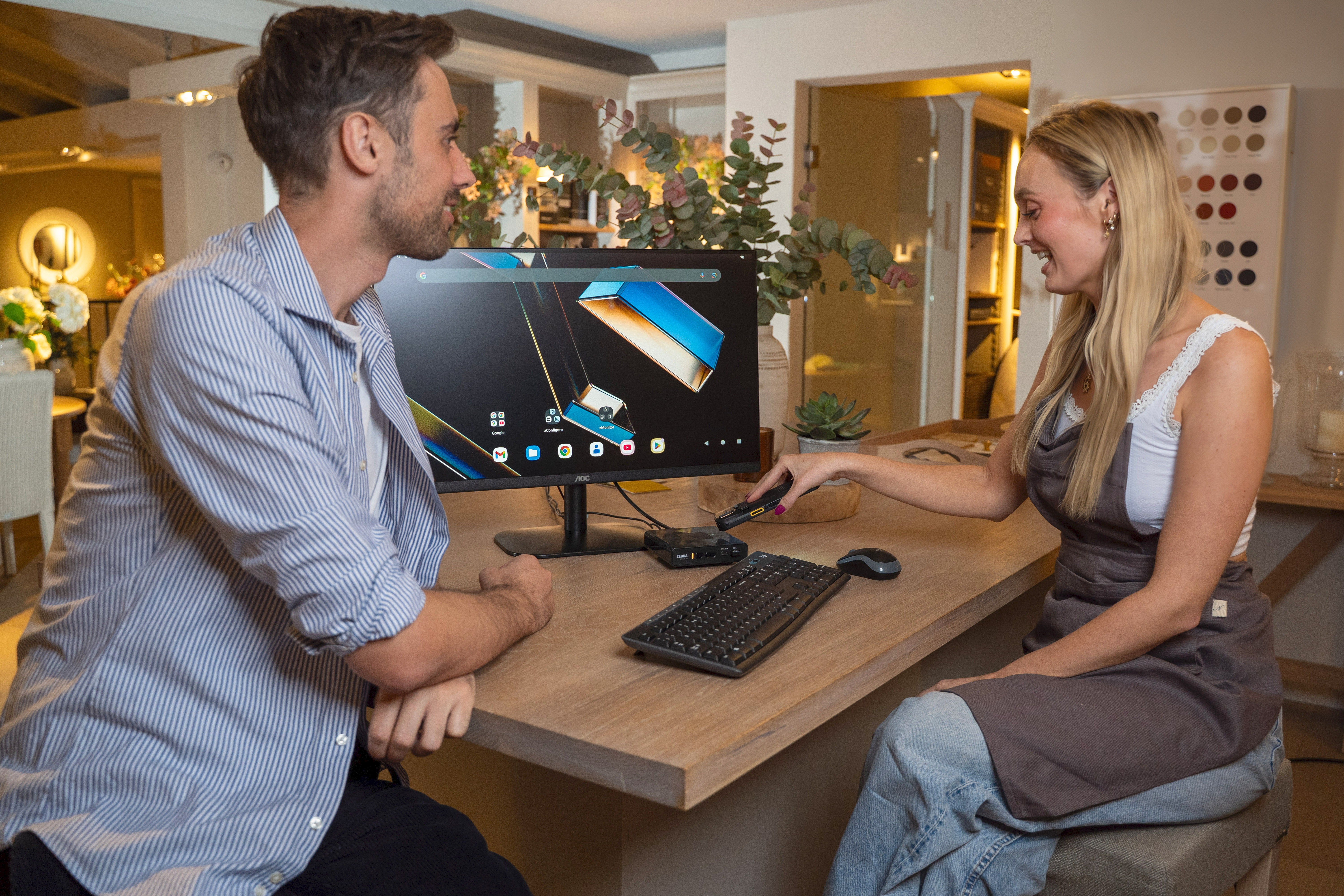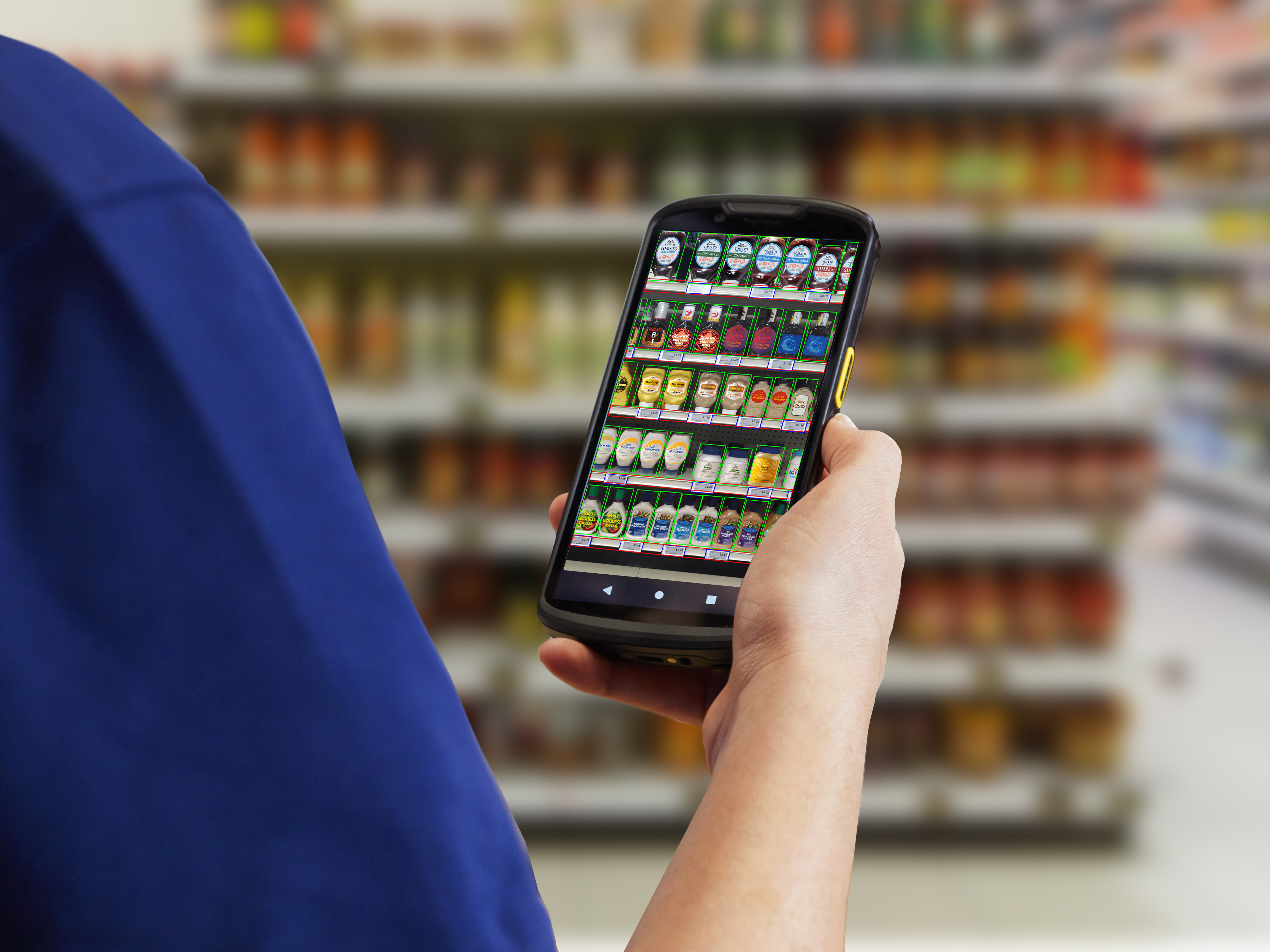Transform retail operations with Zebra’s retail technology solutions, featuring hardware and software for improving inventory management and empowering teams.
Streamline operations with Zebra’s healthcare technology solutions, featuring hardware and software to improve staff collaboration and optimize workflows.
Enhance processes with Zebra’s manufacturing technology solutions, featuring hardware and software for automation, data analysis, and factory connectivity.
Zebra’s transportation and logistics technology solutions feature hardware and software for enhancing route planning, visibility, and automating processes.
Learn how Zebra's public sector technology solutions empower state and local governments to improve efficiency with asset tracking and data capture devices.
Zebra's hospitality technology solutions equip your hotel and restaurant staff to deliver superior customer and guest service through inventory tracking and more.
Zebra's market-leading solutions and products improve customer satisfaction with a lower cost per interaction by keeping service representatives connected with colleagues, customers, management and the tools they use to satisfy customers across the supply chain.
Empower your field workers with purpose-driven mobile technology solutions to help them capture and share critical data in any environment.
Zebra's range of Banking technology solutions enables banks to minimize costs and to increase revenue throughout their branch network. Learn more.
Zebra's range of mobile computers equip your workforce with the devices they need from handhelds and tablets to wearables and vehicle-mounted computers.
Zebra's desktop, mobile, industrial, and portable printers for barcode labels, receipts, RFID tags and cards give you smarter ways to track and manage assets.
Zebra's 1D and 2D corded and cordless barcode scanners anticipate any scanning challenge in a variety of environments, whether retail, healthcare, T&L or manufacturing.
Zebra's extensive range of RAIN RFID readers, antennas, and printers give you consistent and accurate tracking.
Choose Zebra's reliable barcode, RFID and card supplies carefully selected to ensure high performance, print quality, durability and readability.
Zebra's rugged tablets and 2-in-1 laptops are thin and lightweight, yet rugged to work wherever you do on familiar and easy-to-use Windows or Android OS.
With Zebra's family of fixed industrial scanners and machine vision technologies, you can tailor your solutions to your environment and applications.
Zebra’s line of kiosks can meet any self-service or digital signage need, from checking prices and stock on an in-aisle store kiosk to fully-featured kiosks that can be deployed on the wall, counter, desktop or floor in a retail store, hotel, airport check-in gate, physician’s office, local government office and more.
Adapt to market shifts, enhance worker productivity and secure long-term growth with AMRs. Deploy, redeploy and optimize autonomous mobile robots with ease.
Discover Zebra’s range of accessories from chargers, communication cables to cases to help you customize your mobile device for optimal efficiency.
Zebra's environmental sensors monitor temperature-sensitive products, offering data insights on environmental conditions across industry applications.
Zebra's location technologies provide real-time tracking for your organization to better manage and optimize your critical assets and create more efficient workflows.
Enhance frontline operations with Zebra’s AI software solutions, which optimize workflows, streamline processes, and simplify tasks for improved business outcomes.
Empower your frontline with Zebra Companion AI, offering instant, tailored insights and support to streamline operations and enhance productivity.
The everything you need to rapidly and cost effectively develop high-performance AI vision applications on Zebra mobile computers.
Zebra Workcloud, enterprise software solutions boost efficiency, cut costs, improve inventory management, simplify communication and optimize resources.
Keep labor costs low, your talent happy and your organization compliant. Create an agile operation that can navigate unexpected schedule changes and customer demand to drive sales, satisfy customers and improve your bottom line.
Drive successful enterprise collaboration with prioritized task notifications and improved communication capabilities for easier team collaboration.
Get full visibility of your inventory and automatically pinpoint leaks across all channels.
Reduce uncertainty when you anticipate market volatility. Predict, plan and stay agile to align inventory with shifting demand.
Drive down costs while driving up employee, security, and network performance with software designed to enhance Zebra's wireless infrastructure and mobile solutions.
Explore Zebra’s printer software to integrate, manage and monitor printers easily, maximizing IT resources and minimizing down time.
Make the most of every stage of your scanning journey from deployment to optimization. Zebra's barcode scanner software lets you keep devices current and adapt them to your business needs for a stronger ROI across the full lifecycle.
RFID development, demonstration and production software and utilities help you build and manage your RFID deployments more efficiently.
RFID development, demonstration and production software and utilities help you build and manage your RFID deployments more efficiently.
Zebra DNA is the industry’s broadest suite of enterprise software that delivers an ideal experience for all during the entire lifetime of every Zebra device.
Advance your digital transformation and execute your strategic plans with the help of the right location and tracking technology.
Boost warehouse and manufacturing operations with Symmetry, an AMR software for fleet management of Autonomous Mobile Robots and streamlined automation workflows.
The Zebra Aurora suite of machine vision software enables users to solve their track-and-trace, vision inspection and industrial automation needs.
Zebra Aurora Focus brings a new level of simplicity to controlling enterprise-wide manufacturing and logistics automation solutions. With this powerful interface, it’s easy to set up, deploy and run Zebra’s Fixed Industrial Scanners and Machine Vision Smart Cameras, eliminating the need for different tools and reducing training and deployment time.
Aurora Imaging Library™, formerly Matrox Imaging Library, machine-vision software development kit (SDK) has a deep collection of tools for image capture, processing, analysis, annotation, display, and archiving. Code-level customization starts here.
Aurora Design Assistant™, formerly Matrox Design Assistant, integrated development environment (IDE) is a flowchart-based platform for building machine vision applications, with templates to speed up development and bring solutions online quicker.
Designed for experienced programmers proficient in vision applications, Aurora Vision Library provides the same sophisticated functionality as our Aurora Vision Studio software but presented in programming language.
Aurora Vision Studio, an image processing software for machine & computer vision engineers, allows quick creation, integration & monitoring of powerful OEM vision applications.
Adding innovative tech is critical to your success, but it can be complex and disruptive. Professional Services help you accelerate adoption, and maximize productivity without affecting your workflows, business processes and finances.
Zebra's Managed Service delivers worry-free device management to ensure ultimate uptime for your Zebra Mobile Computers and Printers via dedicated experts.
Find ways you can contact Zebra Technologies’ Support, including Email and Chat, ask a technical question or initiate a Repair Request.
Zebra's Circular Economy Program helps you manage today’s challenges and plan for tomorrow with smart solutions that are good for your budget and the environment.
The Zebra Knowledge Center provides learning expertise that can be tailored to meet the specific needs of your environment.
Zebra has a wide variety of courses to train you and your staff, ranging from scheduled sessions to remote offerings as well as custom tailored to your specific needs.
Build your reputation with Zebra's certification offerings. Zebra offers a variety of options that can help you progress your career path forward.
Build your reputation with Zebra's certification offerings. Zebra offers a variety of options that can help you progress your career path forward.

Seven Ways to Drive Size Optimization Precision
Over the last three years, fashion retailers heavily invested in tightening assortments and improving their inventory efficiency. While these investments were needed, all the benefits come undone if a customer cannot find their size. Worse, tightening assortments exacerbates the size stock-out problem, damages customer satisfaction, and creates significant financial pain unless size allocation is accurate. A 20% size misallocation drops margin dollars by 50% if markdown pricing is uniform across all sizes.
What is a retailer saying when they show you incredible outfits at a great price, but you can't find your size?
They're saying, "This is fabulous, just not for you."
About 2 years ago, I dove into the reasons behind this financial loss, the challenges merchants have been experiencing, and the shortcomings of traditional size optimization tools. Since the issue still lingers, I thought it was time to revisit the topic.
So, let’s talk about seven key areas where you can achieve precision size optimization, despite all your challenges and constraints:
1. The Foundational Forecast
Essential with any size optimization is the foundational forecast of consumer demand. This forecast must understand the differences between regions, stores, online, and even the fulfillment type.
State-of-the-art forecasts serve as the backbone for optimization and planning technologies such as allocation, fulfillment, assortment, and pricing decisions. This approach connects operations across different decision points to accomplish common goals.
2. Solving Data Sparsity Challenges
Data sparsity is the most crucial obstacle for precise size optimization. Even if you have perfect data history, data cleanliness, and data access – which, let’s admit, you probably do not – there remains the issue of the one-time, seasonal nature of fashion items. There is no history, especially if a size range changes from S/M/L to 2,4,6,8,10 or if you decide to add new fringe sizes. How do you manage the demand transference between these?
To solve these data sparsity problems, you begin by…
- building profiles at every level of a custom sizing hierarchy that includes product levels and attributes.
- analyzing profiles at each hierarchy level for data sufficiency, and then assigning a weighting based on the sparsity of data at each level for the profile.
- creating a composite size profile, if needed, by combining the multiple hierarchy profiles according to weight.
This process provides detailed level profiles where selling volumes are sufficient. Where they aren’t, profiles are inherited from higher levels.
This sparsity-weighted aggregate methodology allows the system to provide accurate profile values for new sizes compared to what has been purchased before. If a product is ordered in a new size, the relative demand impact of that size is borrowed from higher-level profiles and applied to the new size level profile.
Finally, the weighting approach provides a much better basis for sales imputation. Understanding where data sparsity can lead to flawed sales imputation assumptions will avoid over or under allocation of core and fringe sizes.
3. Providing Coverage Minimums
There are multiple methods to achieve coverage minimums, from a very complex calculation to a straightforward approach. We've found that the straightforward approach is a better solution through many retailer evaluations.
By establishing a threshold value, by store, for what defines a core size and then defining the unit coverage minimum for the core sizes, you can apply coverage minimum responsive to store/product selling without the complexity of detailed rules sets.
4. Establishing User Control
Size optimization will provide no benefit if your team does not trust the system, regardless of how good it is. The most critical components to building trust are visibility and control. Therefore, applications must provide a transparent analysis of current profiles with an easy way for users to modify profile details if required. The right solution will offer the best of both worlds by encompassing a high degree of modeling automation and profile generation alongside powerful tools for user review and entry, if needed, of profiles.
5. Omnichannel
Omnichannel must be natively built-in with the rest of the application, not as an additional add-on or +/- logic external to all decisions. Profiles should reflect store and online sales independently as size demand differs significantly based on channel. Hence, solutions should not aggregate or intermix channel demand; distinctive size profiles must be preserved.
Size profiling demand should also allow for ship-from-store (SFS) aspects of location inventory. This profiling enables any given location size profile to represent two demand sources: native sales and online sales fulfilled from store stock. This aspect becomes even more crucial as retailers increase their stores for online fulfillment.
6. Integration
Size profiling is an integral part of the merchant ordering process. Therefore, the solution must seamlessly integrate with any order management system (OMS). High-performance optimization allows quick API-driven size order quantities available as users write orders. Any value system should provide intelligence within the current OMS infrastructure to enable you to enjoy the advantage of advanced analytic determination of order quantities without replacing expensive ordering systems.
7. Taking that Last Step
Size optimization remains an unprioritized solution in many retailers' portfolios – possibly even yours. It’s often an afterthought because it remains at the end of an exhausting planning process, performed right before cutting the order. But what's worse:
- Putting in that last 5% to ensure all your prior work pays off, or
- skipping the last part to get it done, but then seeing all your earlier hard work not coming to fruition?
If you’ve been struggling with size optimization, let’s talk.
###
You May Also Be Interested in These Resources:

David Barach
David Barach is currently a Senior Director for Retail Software Solution Strategy supporting the overall product content, positioning and adoption for antuit.ai’s suite of merchandising solutions for retailers. antuit.ai was recently acquired by Zebra Technologies.
Previously, he has worked for 20 years in the retail solutions space in Pricing, Planning and Inventory Optimization solutions for 84.51 (Kroger Co,), SAS Institute, DemandTec (now IBM), ProfitLogic (now Oracle) and Spotlight Solutions. Prior to the solution space, he worked for 15 years in store, planning and pricing roles for Target Corp, Mercantile Stores and Macy’s Department Stores. He has an MBA from Memphis State University and BA from Vanderbilt University.
Zebra Developer Blog
Zebra Developer BlogZebra Developer Blog
Are you a Zebra Developer? Find more technical discussions on our Developer Portal blog.
Zebra Story Hub
Zebra Story HubZebra Story Hub
Looking for more expert insights? Visit the Zebra Story Hub for more interviews, news, and industry trend analysis.
Search the Blog
Search the BlogSearch the Blog
Use the below link to search all of our blog posts.
Most Recent
Legal Terms of Use Privacy Policy Supply Chain Transparency
ZEBRA and the stylized Zebra head are trademarks of Zebra Technologies Corp., registered in many jurisdictions worldwide. All other trademarks are the property of their respective owners. ©2025 Zebra Technologies Corp. and/or its affiliates.




